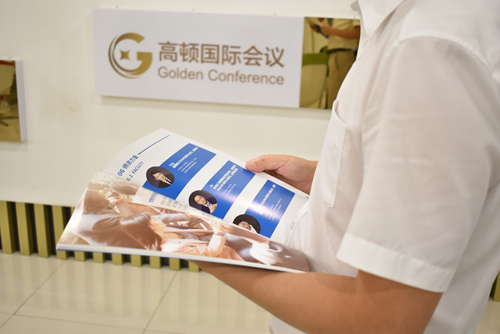
ACCA讲义:ACCA f5讲义主要有哪些内容?
- 2016年04月01日
- 14:01
- 来源:高顿财经
- 阅读:(159)
2024ACCA备考资料
- 财务英语入门
- 历年考题答案
- 2024考纲白皮书
- 2024考前冲刺资料
- 高顿内部名师讲义
- 高顿内部在线题库
摘要:点击免费领取: ACCA学习资料大礼包 Advanced costing method Chapter learning objectives Upon completion of this chapter you will be able to: explain what is meant by the term cost driver id...
Advanced costing method
Chapter learning objectives
Upon completion of this chapter you will be able to:
explain what is meant by the term cost driver identify appropriate cost drivers under activity-based costing (ABC) calculate costs per driver and per unit using (ABC)§ compare ABC and traditional methods of overhead absorption based on production units, labour hours or machine hours.
explain the implications of switching to ABC on pricing, performance management and decision making.
explain what is meant by the term ‘target cost’ in both manufacturing and service industries.
derive a target cost in both manufacturing and service industries.
explain the difficulties of using target costing in service industries§ explain the implications of using target costing on pricing, cost control and performance management.
describe the target cost gap.
suggest how a target cost gap might be closed.
explain what is meant by the term ‘life-cycle costing’ in a manufacturing industry§ identify the costs involved at different stages of the life-cycle.
explain the implications of life-cycle costing on pricing, performance management and decision making.
describe the process of back-flush accounting and contrast with traditional process accounting.
explain, for a manufacturing business, the implications of back-flush accounting on performance management§ evaluate the decision to switch to back-flush accounting from traditional process control for a manufacturing business.
explain throughput accounting and the throughput accounting ratio (TPAR), and calculate and interpret, a TPAR.
suggest how a TPAR could be improved.
1 Activity based costing
1.1 Introduction – absorption cost
In F2 we saw how to determine a cost per unit for a product. Key issues of relevance here are the following:
Firms have the choice of two basic costing methods – marginal costing and absorption costing.
To enable this, all overheads must first be allocated/apportioned/reapportioned into production departments, again using a suitable basis (e.g. rent on the basis of floor area).
Overhead expenses incurred/budgeted
Step 1: Overheads allocated or apportioned to cost centres using suitable bases Cost centres (usually departments)
Step 2: Service centre costs reapportioned to production centres
Step 3: Overheads absorbed into units of production using an OAR (usually on the basis of direct labour hours) output
本文由国内**的ACCA培训机构高顿财经整理
Step 2: Service centre costs reapportioned to production centres
Step 3: Overheads absorbed into units of production using an OAR (usually on the basis of direct labour hours) output
本文由国内**的ACCA培训机构高顿财经整理
推荐:考生都在用的ACCA资料>>【领取2023ACCA完整资料】 (资料包含ACCA必考点总结,提升备考效率,加分必备)
版权声明:
1、凡本网站注明“来源高顿ACCA”或“来源高顿、ACCA学习帮”,的所有作品,均为本网站合法拥有版权的作品,未经本网站授权,任何媒体、网站、个人不得转载、链接、转帖或以其他方式使用。
2、经本网站合法授权的,应在授权范围内使用,且使用时必须注明“来源高顿ACCA”或“来源高顿、ACCA学习帮”,并不得对作品中出现的“高顿”字样进行删减、替换等。违反上述声明者,本网站将依法追究其法律责任。
3、本网站的部分资料转载自互联网,均尽力标明作者和出处。本网站转载的目的在于传递更多信息,并不意味着赞同其观点或证实其描述,本网站不对其真实性负责。
4、如您认为本网站刊载作品涉及版权等问题,请与本网站联系(邮箱fawu@gaodun.com,电话:021-31587497),本网站核实确认后会尽快予以处理。
分享到:
急速通关计划
ACCA全球私播课
周末面授班
其他课程
报考指南
******ACCA备考机经
价值1288元 考试必备资料 免费领取 高顿ACCA研究院******出品
价值1288元 考试必备资料 免费领取 高顿ACCA研究院******出品
领取ACCA资料包
大家都在看
-
阅读(9579)
-
阅读(9083)
-
阅读(9068)
-
阅读(8764)
-
阅读(8739)
日排行 • 周排行
- 1 2023年ACCA考试科目通过率排名:哪些科目最容易通过?
- 2 2024年参加12月acca考试带什么?准考证可以打印了吗?
- 3 2024年accaf1裸考能过吗?历年通过率多少?
- 4 定了!2023年acca要考几年能考下来?要考几科才可以拿出去面试?
- 5 2024年acca要考几门?按什么顺序考?
- 6 2023年申请acca免考科目的条件?最多可以免考几门科目?
- 7 2023年哪些大学财会专业比较好?没错了,就是这几所!
- 8 acca学姐来解答2023年acca是什么考试?各科目全称是什么?
- 9 定了!2023年acca考位满了还有可能报上吗?
- 10 2024年cpa和acca区别大吗?体现在哪些地方?
- 1 2023年ACCA考试科目通过率排名:哪些科目最容易通过?
- 2 2024年参加12月acca考试带什么?准考证可以打印了吗?
- 3 2024年accaf1裸考能过吗?历年通过率多少?
- 4 定了!2023年acca要考几年能考下来?要考几科才可以拿出去面试?
- 5 2024年acca要考几门?按什么顺序考?
- 6 2023年申请acca免考科目的条件?最多可以免考几门科目?
- 7 2023年哪些大学财会专业比较好?没错了,就是这几所!
- 8 acca学姐来解答2023年acca是什么考试?各科目全称是什么?
- 9 速看!2023年会计学acca是什么意思?一文教你看懂!
- 10 定了!2023年acca考位满了还有可能报上吗?
-
ACCA考试热门词
-
ACCA内部备考资料高顿ACCA为您免费提供全新ACCA资料,包括历年考题、考官报考、考官文章、考纲解析、学霸笔记、内部讲义等,同时还助您了解新学员报名注册指南、机考报考考试引导、OBU&UOL申请攻略等,点击免费获取。
-
- ACCA常见问题
- ACCA推荐阅读
- ACCA考试资讯
- ACCA原创文章
- ACCA学霸分享
- ACCA常见问答








